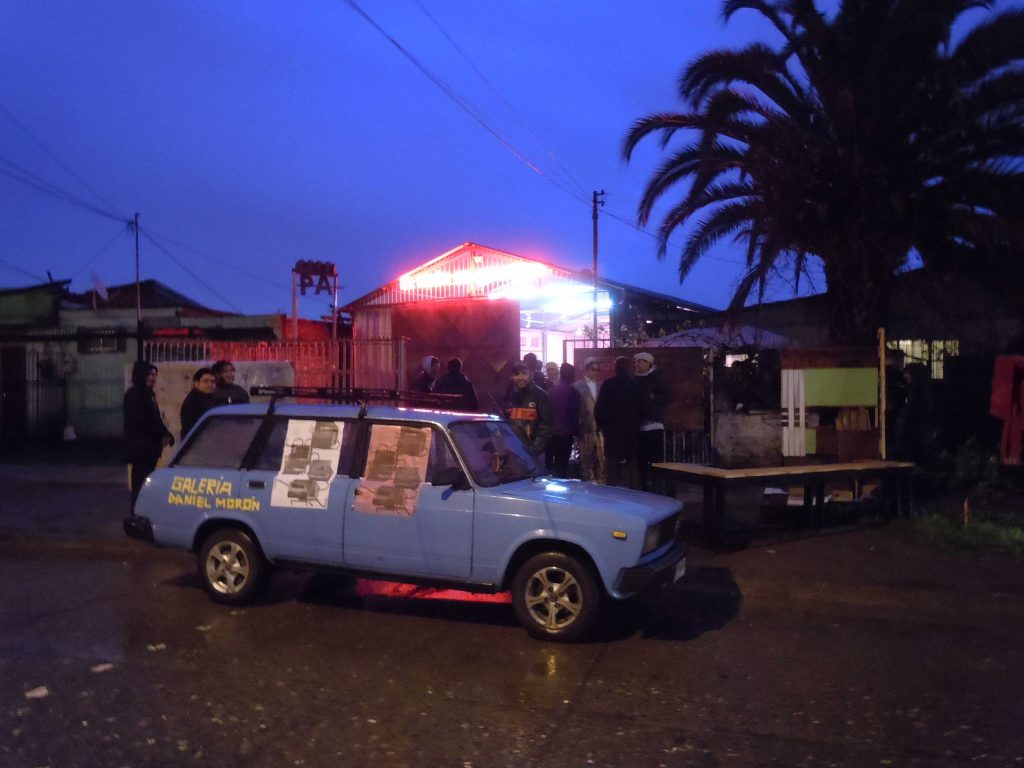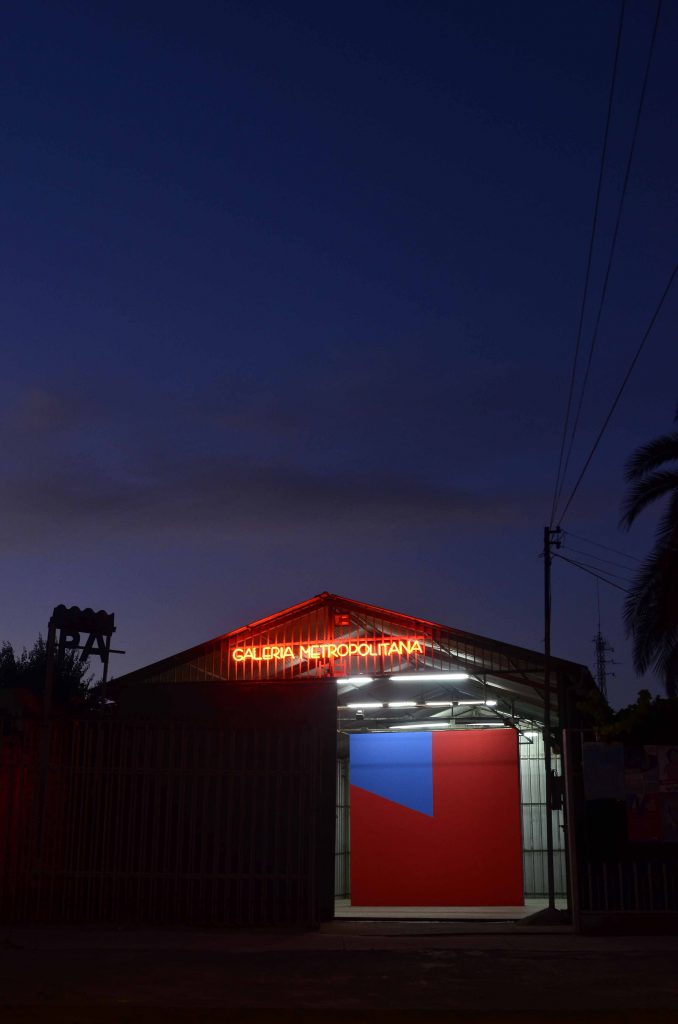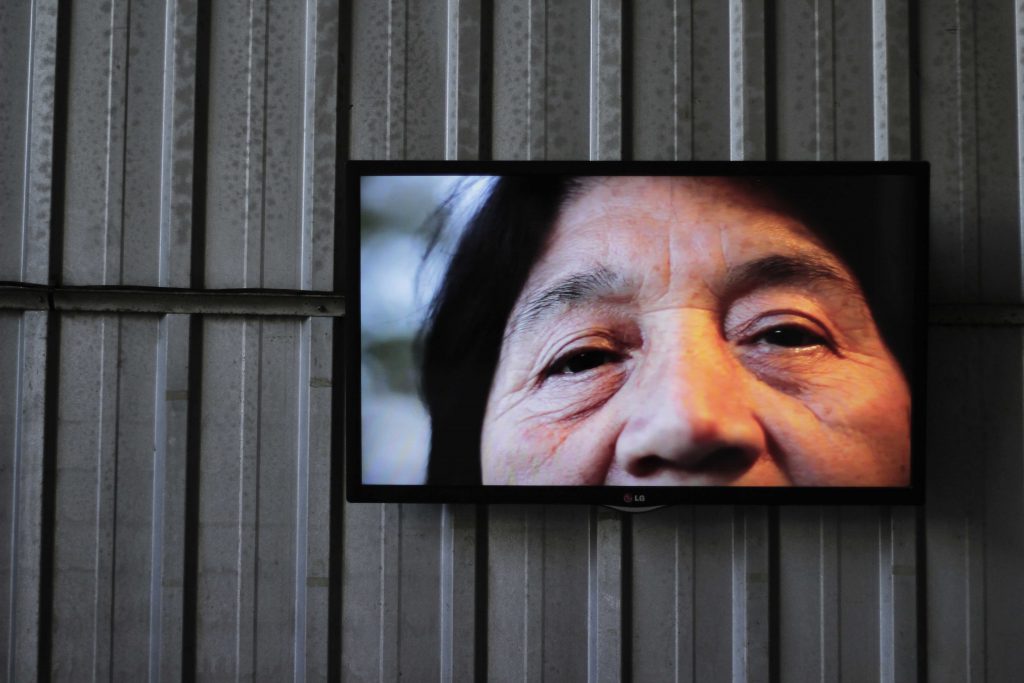El Eco [EE]: Is it possible to produce a better world from Institutions?
Ana María Saavedra/ Luis Alarcón [AMS/LA]: It is possible to produce transformations (artistic, social, and political) from the Institution; for this the Institution must run the risk of assuming a position and discourse in favor of critical thought, which must translate, curatorially and materialy, inside and outside of it. The inside is almost always safe terrain for this, but one is not to trust this: keeping a position as such is always difficult. The outside is fundamental, as it seeks to connect said práctice (de-elitize, contaminate art) with contexts: articulating with people and organizations not linked to the same field of art (which is neither easy to maintain and deepen with time). In synthesis, zones of dispute (with an inside and an outside) that require tenacity, density, intensity and efficiency.
El Eco [EE]: Does countercultural self-management oppose institutionalization and professionalization?
[AMS/LA]: Countercultural self-management should work strategically in a relation of critical tension with multiple Institutions; strategic game that separates itself from opportunism and that happens from autonomous thought and action. The objective is to maintain the largest possible degree of liberty in action for artistic, social and political transformation. Space that manages itself, alternative and/or independent can become institutionalized, no doubt about it, specially when it’s modus operandi becomes an action model. Thus the process is to be assumed as institutionalization (which usually conveys a high degree of professionalization), managing it ethically and (self)critically from self-sabotage, which becomes the antidote against domesticity and normalization.

[EE]:Which models of existence and management are we inventing? Which models that already exist are of service today?
[AMS/LA]: After learning and infinite number of experiences or initiatives in self-management and independence, when can attest that there is always a degree of of originality in each of these. Certain elements, formats, devices, postures, etc., repeat, but always there is something that sets the apart from each other. What is fascinating, we may conjure, is given by the places where something is still being created or invented in art, which is no triviality. Inside this infinite number of spaces, many have become action models, which makes them references which one may rely on at any given point to think one’s own place: La Panadería in Mexico City, Capacete in Río de Janeiro, Galería Chilena, Hoffmann´s House in Santiago, Espacio La Culpable in Lima, H-10 in Valparaíso, a long etcetera, are all emblematic examples. The wide range and constant renovation of alternative or self-managed spaces speaks about their fragility (they open and close from one day to the next) and of their capacity of adapting and resisting in the face of adversity. It is positive to point out that, in the current boom of self-managed, alternative spaces or small and medium cultural enterprises, it is not enough to invent a new exhibition and diffusion device for artists and their works. If there is no critical discourse and/or self-reflexive place of enunciation for action beyond the realm of art, everything would stay blocked in this perverse machine called the “art system” that profits from “indie” spaces and that, from one moment to the next, absorbs or dissolves them without any consideration.
[EE]: Which organization structures distinguish self-management?
[AMS/LA]: If we think of the beginning of a self-managed space, in first place it stands out because of the capacity to deliver immediate responses to the challenges that appear since that initial stage. Then there is the competence to overcome said problems in base of low fi operations, working without a budget or with what is at hand. Add to this the personal relations and the collaborative networks that built light and flexible structures, which allows them to sort-out diverse problems, avoid or devoid bureaucracy of all forms, in order for becoming liberated space for the generation of artistic occurrences.


[EE]: What can Institutions learn from self-managed spaces and vice versa?
[AMS/LA]: Not every Institution is interested in learning from self-managed spaces. Those which are willing to, it is because they think their own work as the generation of visual and critical thought. From that sort of Institutional mindframe, the idea would be to rethink its dynamics, adopting action modalities that liberate and/or de-bureaucratize artistic practices. An Institution like this must not only think about learning (or recuperating resources) from alternative spaces; it should also target the generation of possible work alliances (permanent or contextual) with them. Alternative spaces self-create their programming, they start “from scratch”, which is why they must learn to use all the available instruments that are “offered” both by the artistic system as the social. We must remember that in the origin of alternative spaces is the figure of the lack thereof and criticism towards artistic Institutions, for being inoperative and/or decadent. A possible work allegiance between an independent space and a formal Institution ― which is already an anomaly ― will depend of multiple factors, such as a high dose of ideological flexibility and a shared wager that points towards debunking those legitimating powers closed onto themselves, common trait in the current state of art.
[EE]: For which context, for whom are we managing culture?
[AMS/LA]: For us, as a space, the relationship with the territory is fundamental, which is why we manage culture from that locality that, paradoxically, has allowed for our current becoming delocalized, both regionally and globally. In other words, that locality has been the basis for the dissemination of our work, that has translated as of late into intercontextual actions that have allowed us to activate culture beyond our own borders.


[EE]: Which cultural goods are we creating? For which users, spectators, audiences?
[AMS/LA]: The contemporary artist is a visual thinker, his work (pieces, images, texts, actions, etc.) translate into unique thoughts and knowledge. Artists initially create for themselves, later their public is normally other artists, curators, critics, art students, Institution directors, collectors, either private or public. Add non specialized spectators, that engage with art sporadically, intermittently, and with different levels of comprehension and commitment. After this, comes a wide majority which, apparently, has no necessity for art. The wager will be to produce art (cultural objects or events) which go beyond the art system, their specialists, captive audiences, and markets, pointing towards serving as instrument (pedagogic or not) for the activation of zones or cultural democracy, critical thought and desire fir art and culture.
[EE]: Is it possible to experiment from Institutions?
[AMS/LA]: Yes experimentation is possible from the Institution; there’s notable examples of such politics (MACBA in Barcelona, El Eco in Mexico City, and, in their initial period, the Museum of Memory and Human Rights in Santiago, Chile) but, this isn’t the norm. What to do? Continue insufflating from the margins (the place normally occupied by alternative spaces) criticisms, ideas, and examples of how to make art a perturbing-transforming axis of human existence.
